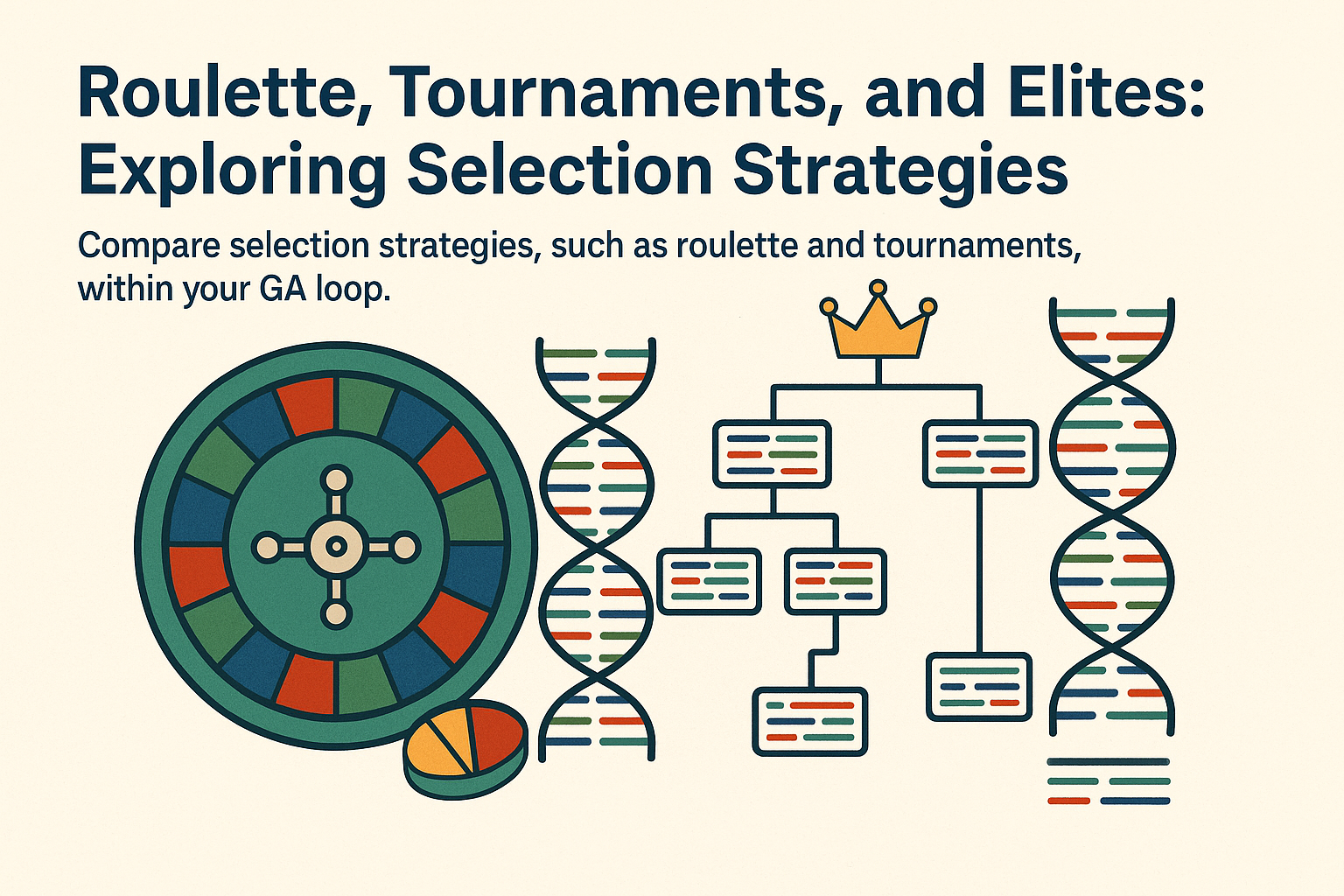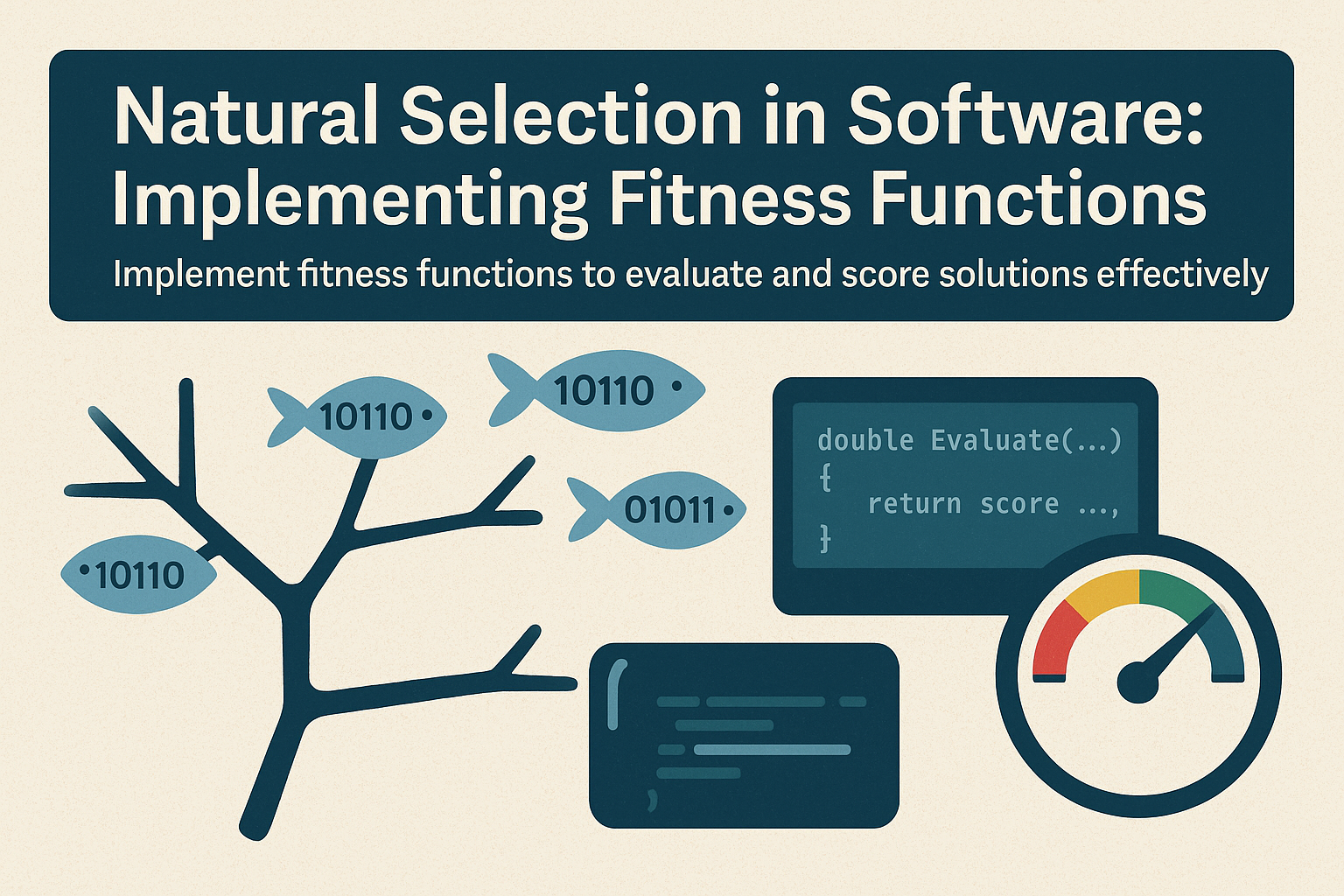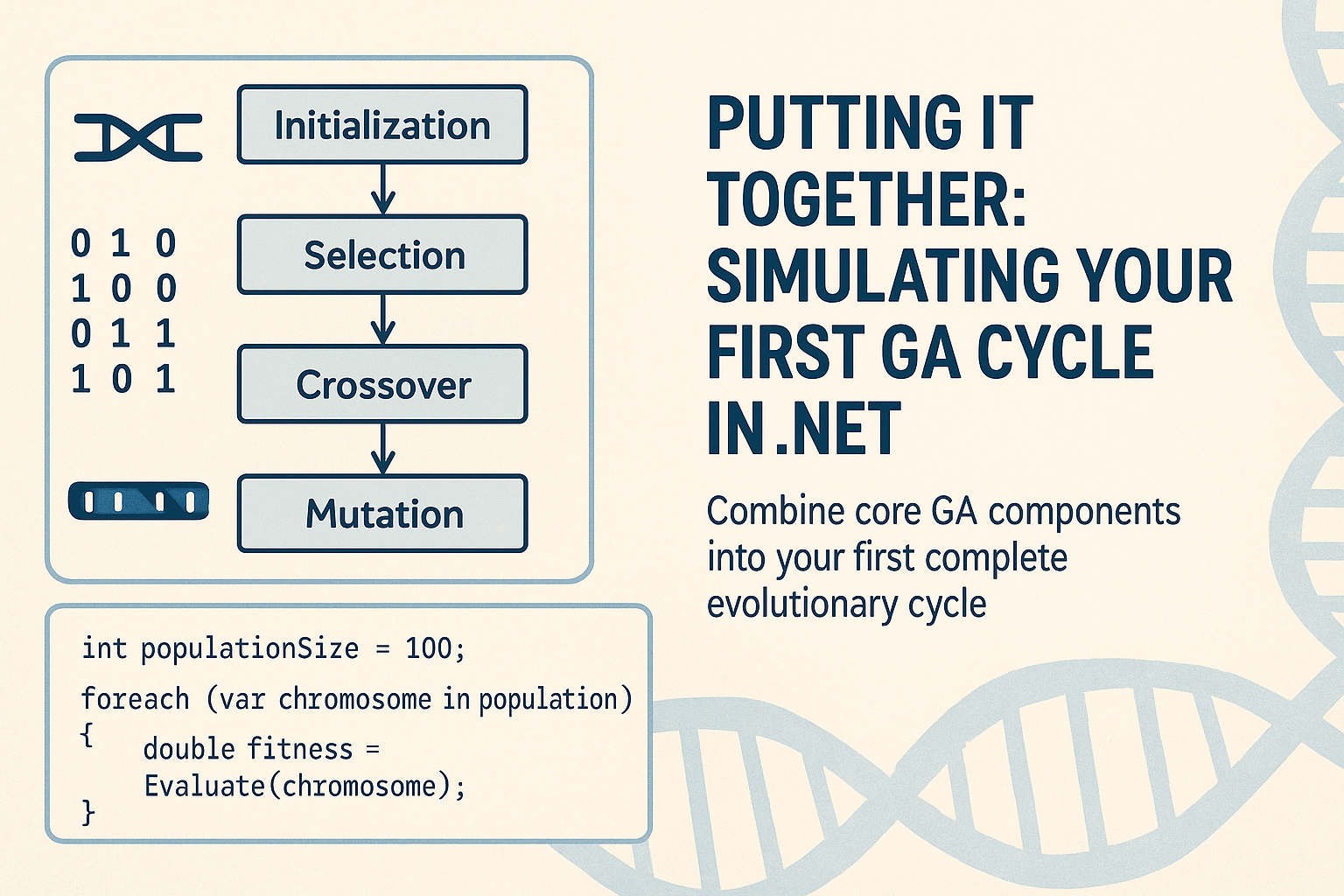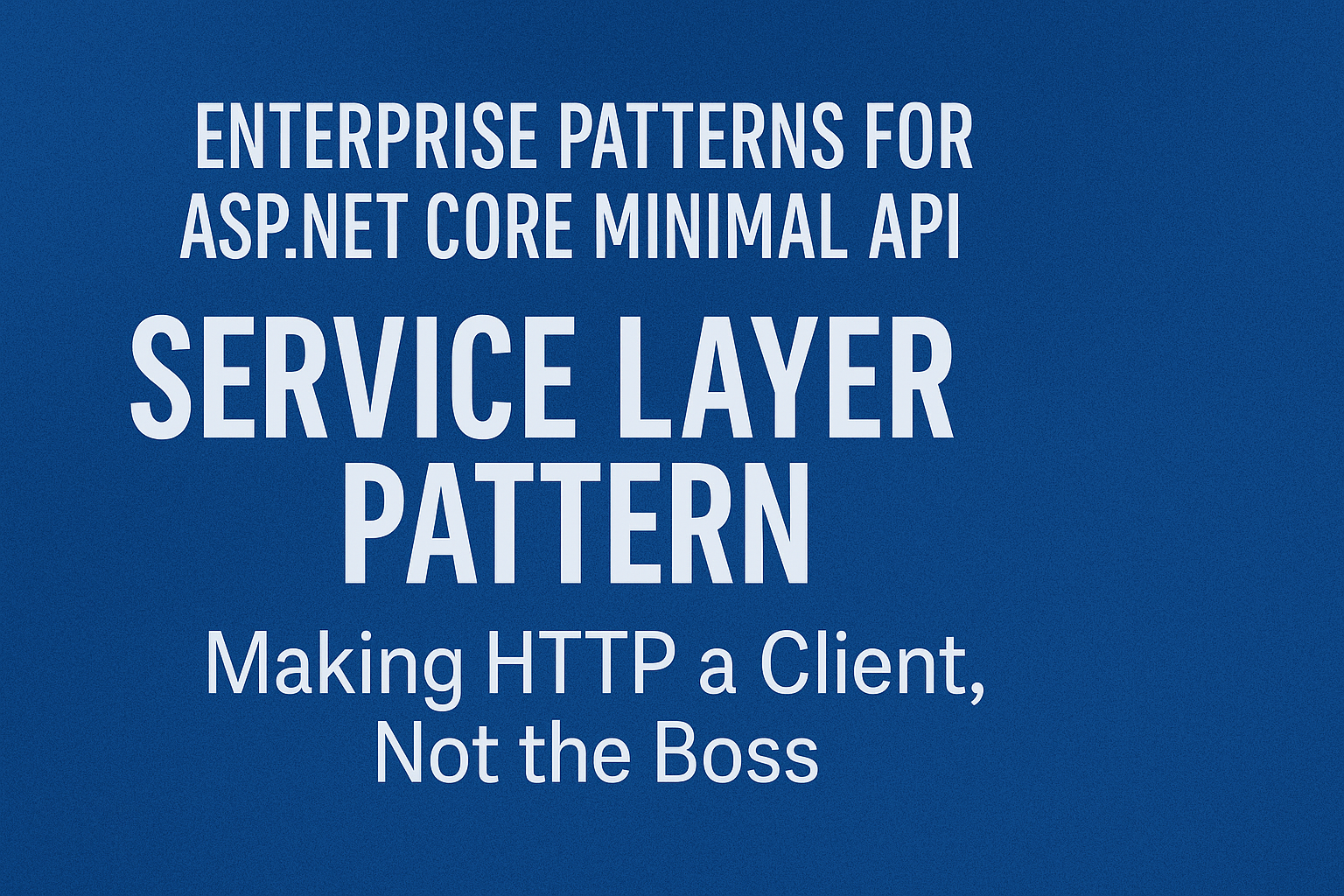
Day 6: Roulette, Tournaments, and Elites: Exploring Selection Strategies
- Chris Woodruff
- June 9, 2025
- Genetic Algorithms
- .NET, ai, C#, dotnet, genetic algorithms, programming
- 0 Comments
Once you’ve calculated the fitness of each chromosome in your population, the next step in the genetic algorithm lifecycle is selection—deciding which chromosomes get to reproduce and which are left behind.
Selection strategies play a crucial role in balancing exploration (searching new areas of the solution space) and exploitation (refining known good solutions). Choosing the right strategy affects the convergence speed and the overall effectiveness of your genetic algorithm.
Today, we’ll explore the most common selection strategies: roulette wheel selection, tournament selection, and elitism. We’ll compare them and implement each one in C#.
1. Roulette Wheel Selection (Fitness Proportional)
In roulette wheel selection, also known as fitness-proportionate selection, the probability of a chromosome being selected is directly proportional to its fitness.
Think of it as a weighted lottery. Chromosomes with higher fitness get more “space” on the wheel.
C# Implementation
public Chromosome RouletteSelection(List<Chromosome> population)
{
int totalFitness = population.Sum(c => c.FitnessScore);
int spin = Random.Shared.Next(0, totalFitness);
int cumulative = 0;
foreach (var chromosome in population)
{
cumulative += chromosome.FitnessScore;
if (spin < cumulative)
return chromosome;
}
return population[^1]; // fallback
}
Pros
- Easy to implement
- Scales with population fitness
Cons
- Can become unstable if one chromosome dominates early
- Low-performing chromosomes may never get selected
2. Tournament Selection
Tournament selection picks a random subset of the population and selects the fittest among them. You can configure the tournament size to control selective pressure.
C# Implementation
public Chromosome TournamentSelection(List<Chromosome> population, int tournamentSize = 3)
{
var tournament = population.OrderBy(_ => Guid.NewGuid())
.Take(tournamentSize)
.ToList();
return tournament.OrderByDescending(c => c.FitnessScore).First();
}
Pros
- Simple and efficient
- Robust against fitness scaling issues
- Encourages diversity (when tournament size is small)
Cons
- Parameter-sensitive
- Too much pressure can lead to premature convergence
3. Elitism
Elitism ensures that the best chromosomes from the current generation are always preserved in the next one. This guarantees that your population never loses the most fit individuals due to random chance.
C# Implementation
public List<Chromosome> ApplyElitism(List<Chromosome> population, int eliteCount)
{
return population.OrderByDescending(c => c.FitnessScore)
.Take(eliteCount)
.ToList();
}
You typically combine elitism with another selection method. For example, carry the top 2 chromosomes forward, then use tournament or roulette to fill the rest of the population.
Pros
- Preserves progress
- Accelerates convergence
Cons
- Can reduce diversity if overused
Combining Strategies
Most production-level genetic algorithms combine these techniques:
- Use elitism to preserve the top performers
- Use tournament or roulette to fill the remaining population
Here’s a high-level strategy:
var elites = ApplyElitism(population, 2);
var children = new List<Chromosome>(elites);
while (children.Count < population.Count)
{
var parent1 = TournamentSelection(population);
var parent2 = TournamentSelection(population);
var child = parent1.Crossover(parent2);
child.Mutate(0.01);
children.Add(child);
}
This approach keeps your evolutionary process guided and steady, without falling into stagnation or chaos.
Choosing the Right Strategy
| Strategy | Best When… |
|---|---|
| Roulette | Fitness is well distributed across the population |
| Tournament | You want simplicity and diversity |
| Elitism | You need to preserve peak performance |
Experimentation is key. What works well for a string evolution problem may not work for route optimization or machine learning parameter tuning.
Up Next
In tomorrow’s post, we’ll tie everything together and implement the full GA loop—initializing the population, running the fitness evaluation, applying selection, performing crossover and mutation, and evolving over generations.
This is where your C# code starts to breathe and evolve on its own.
Let the fittest rise.






